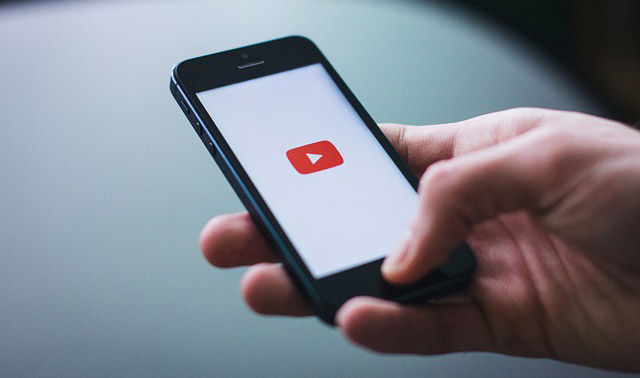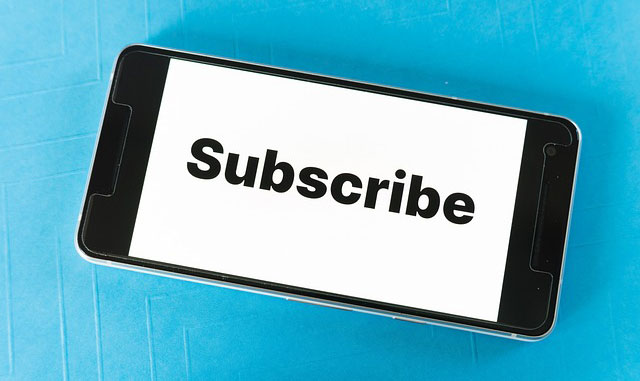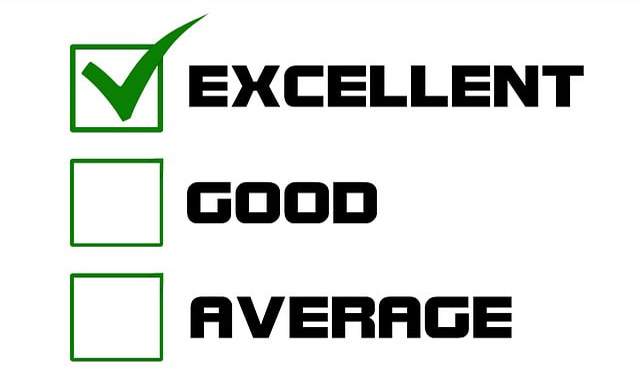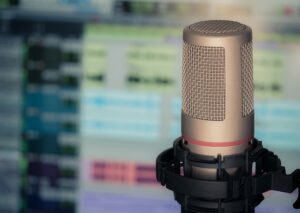If you’re looking for ways to grow your podcast and reach a broader audience, you’ve probably come to the natural conclusion that you'll need to appear in the mother of all podcasting listening apps: Apple podcasts.
But there’s another important platform that’s often overlooked because perhaps it’s not podcast-specific, but yet has immense potential for podcasters like you: YouTube.
With over 2 billion monthly active users, YouTube is the largest video-sharing platform in the world, which makes it a natural way to deliver your podcast content (or at least highlights of it) to a vast global audience.
In this article, we'll take you through the steps of using YouTube as a cost-effective alternative to more traditional podcast hosting platforms, from discussing why YouTube is good for podcasters, to what you need in order to started to the best practices for making your podcast a success on the platform.
Disclosure: Although I receive affiliate compensation at no additional cost to you to support this site that compensation in no way influences my recommendations, which are strictly informed by my 10+ years of online business experience consulting for clients large and small. My aim is to always recommend tools that offer the best return for your investment (for more details, read my Affiliate Disclosure).
Why YouTube Is Good For Podcasts
Even though YouTube is not a podcast hosting platform per se, it offers several benefits that make it an ideal platform to host your show:
Potential for a very large audience: YouTube's user base is massive, so posting your podcast on the platform can potentially attract a much larger audience than just publishing in a dedicated podcast hosting platform, like Buzzsprout or Podbean.
Benefits of a video podcast: YouTube is primarily a video sharing platform, so posting a video version of your podcast can offer an enhanced way to engage with your audience and provide additional value than an audio-only podcast.
Plus a video podcast on YouTube could also be consumed as an audio podcast (think about commuters listening in while driving.)
Cost-effectiveness of YouTube as a platform: Compared to dedicated podcast hosting platforms, posting your podcast on YouTube can be more cost-effective.
In fact, if you already own the necessary recording equipment and editing software, it’s actually free to use plus you can actually get paid ad-revenue share once you reach a minimum number of monthly views.
Increased discoverability through YouTube's search algorithms: YouTube's search algorithms can help your podcast reach new audiences by suggesting your content to users based on the keywords you choose in your video title and description (fun fact: YouTube is the second largest search engine in the world after Google.)
9 Steps to Start Your Own Podcast On YouTube

Ready to jump in? Here are 9 steps you can follow to start your own podcast on YouTube:
1. Plan Your Podcast Content
Before you start creating your YouTube podcast, you’ll need to have a clear idea of what you want to talk about, who your target audience is, and what format your podcast will take.
Will it be a solo podcast? An interview-style podcast? A co-hosted discussion? Also, what will be the length of each episode? What topics will you cover? These are some of the questions you need to answer before you start creating your episodes.
2. Set Up Your Recording Equipment
To create a podcast, you’ll need some basic recording equipment, such as a microphone, headphones, and recording software.
Although technically you could do away with a laptop, there’s an expectation for top audio and video quality from the YouTube user community, and you want to make sure that you meet or exceed that baseline by arming yourself with some professional tools.
The downside is that you’ll have to budget hard-earned cash to pay for this gear. The good news? A good pair of headphones and a quality external microphone will last you a very long time if you treat them well.
3. Record and Edit Your Podcast
Once you have your content planned and your equipment set up, it's time to start recording your podcast.
Depending on your format and style, you can either record your podcast in one shot or break it up into segments and record them separately.
After recording, edit your podcast using software like Audacity or GarageBand.
You can take this opportunity to remove any mistakes, add transitions, and adjust volume levels to make sure everything sounds and looks good.
4. Create a YouTube Channel

If you don't have a YouTube channel already, you'll need to create one. You can get one for free using your Google account.
Make sure your channel name reflects the nature of your podcast to make it easier for users to find you, and then create an appealing banner image to make it look professional.
5. Add Podcast Details to Your YouTube Channel
Once you have your channel set up, add all the details of your podcast to your channel's About page, including the name of your podcast, a description of what your podcast is about, and any links to your website and social media profiles.
6. Convert Your Podcast to Video
To upload your podcast to YouTube, you need to convert it to a video format that follows the specs of the platform (for more details click here.)
7. Upload Your Podcast to YouTube
Once you've converted your podcast to the correct video format, it's time to upload it to YouTube.
Make sure you add an eye-catching thumbnail image that accurately represents your podcast episode. Make sure to do your keyword research so you can optimize your episode title and description for search engines.
8. Promote Your Podcast on Social Media
Once you've uploaded your podcast to YouTube, it’s time to promote it on the social media platforms you’re active on. Encourage your followers to watch your podcast and share it with their friends.
9. Monitor and Analyze Your Performance
Finally, keep an eye on your podcast's performance on YouTube. Use YouTube analytics or third-party tools like TubeBuddy and VidIQ to track your views, engagement, and other metrics.
This will help you understand your audience and make improvements to your podcast over time.
Following these nine steps will help you maximize your reach and increase your audience.
Best Practices for Podcasting On Youtube

To make the most of YouTube as a podcasting platform, follow the best practices below:
Use custom thumbnails: Creating custom thumbnails for your podcast will help you stand out and attract more viewers. Use high-quality images and include calls to action in your thumbnail to entice viewers to click on it.
Optimize your titles and descriptions: Use relevant keywords in your titles and descriptions to help YouTube's algorithm understand what your podcast is about.
Use titles that describe the content of your episodes but also use hooks to entice people to watch your video.
Engage with your audience: Respond to comments and questions from your viewers to build a sense of community around your podcast.
Don’t let your comments go unanswered, especially when you get compliments or when someone asks you a direct question.
Use calls to action: Encourage your viewers to subscribe to your channel, like and share your videos, and leave comments.
Use calls to action in your videos to direct your viewers to take specific actions.
In Conclusion
Launching your podcast on YouTube is a great way to expand your audience and grow your brand.
With its massive user base, YouTube offers a cost-effective and accessible platform to deliver your podcast to a global audience.
Follow the steps outlined in this article to start your own podcast on YouTube and make it a success.
Remember to be consistent with your content, engage with your audience, and use the above best practices to make the most of YouTube as a podcasting platform.
With some effort and creativity, you may be able to turn your podcast into a YouTube sensation and grow a loyal fan base (that’s where Joe Rogan started from scratch, after all.)
So, what are you waiting for? Start recording, uploading, and engaging with your audience on YouTube today!







